
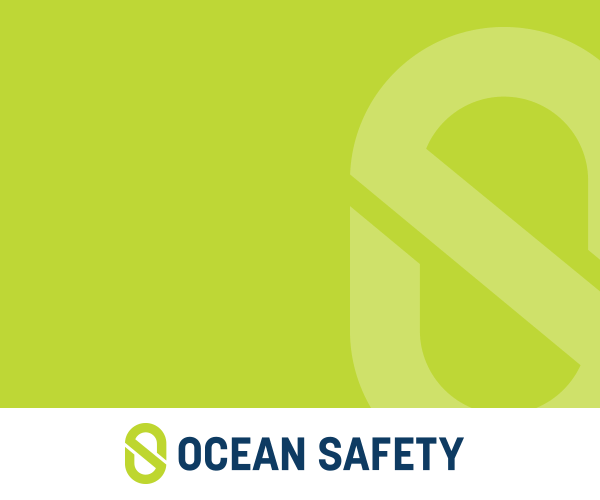



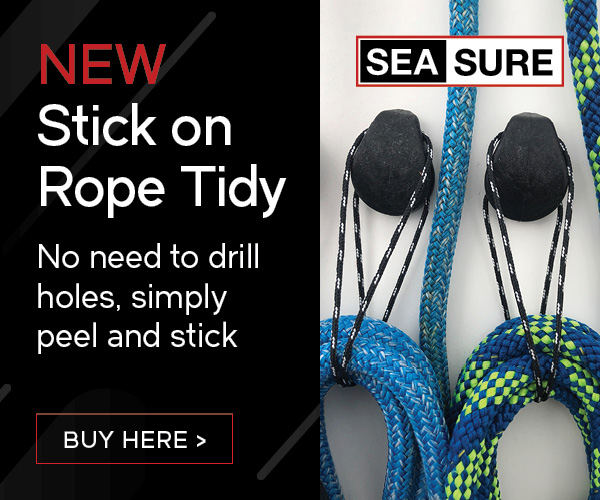
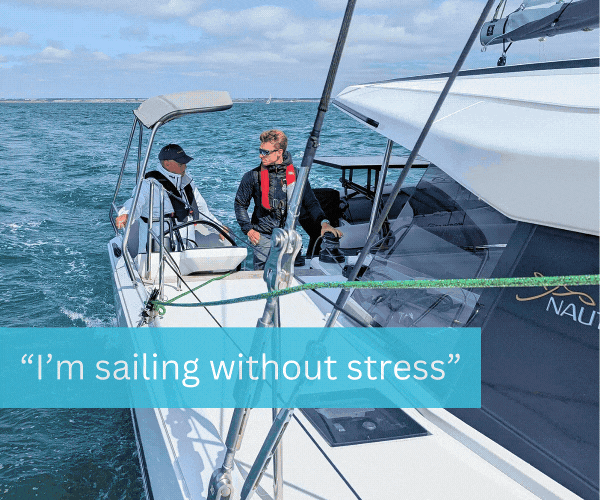



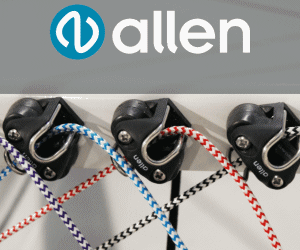
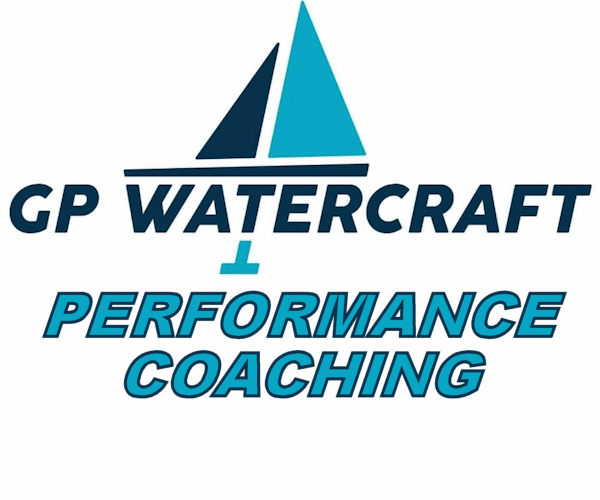

| Laser 140101 Tynemouth |
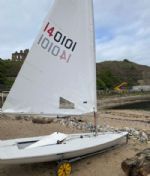 |
| Laser 28 - Excellent example of this great design Hamble le rice |
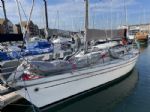 |
| Rossiter Pintail Mortagne sur Gironde, near Bordeaux |
 |
List classes of boat for sale |
New Boats 2005 |
Post Reply 
|
Page <1 7891011 14> |
| Author | |
Wave Rider 
Really should get out more 
Joined: 27 Oct 04 Location: United Kingdom Online Status: Offline Posts: 909 |
 Post Options Post Options
 Quote Quote  Reply Reply
 Topic: New Boats 2005 Topic: New Boats 2005Posted: 28 Feb 05 at 9:21pm |
|
Yeah i guess it would slow yo down a fair bit would'nt it !
By the way is cavatation the air gaps the rudder makes? |
|
|
-[Franko]-
Chew Valley Lake Sailing Club RS600 933 |
|
 |
|
Calum_Reid 
Groupie 

Joined: 09 Apr 04 Location: United Kingdom Online Status: Offline Posts: 59 |
 Post Options Post Options
 Quote Quote  Reply Reply
 Posted: 28 Feb 05 at 9:42pm Posted: 28 Feb 05 at 9:42pm |
|
Yeah its when the pressure on the water arround a foil causes the water to boil away leaving a gap!I remember reading that really it only applies to speed sailing boats because normal dingies as they dont move fast enough! U can get the same effects as cavitation in a dinghy but thats just down to inefficency!
|
|

|
|
 |
|
Phil eltringham 
Really should get out more 
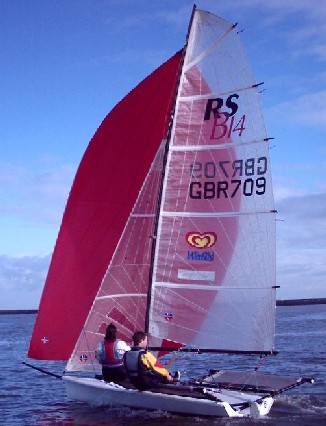
Joined: 16 Mar 04 Location: England/Hitchin Online Status: Offline Posts: 1105 |
 Post Options Post Options
 Quote Quote  Reply Reply
 Posted: 28 Feb 05 at 10:12pm Posted: 28 Feb 05 at 10:12pm |
|
wave rider, re: cavitation. I presume the air gaps on a rudder which you are refering two are when the waters surface drops down one side of the blade as you turn quickly. This is not cavitation, what is happening (in simple terms) is that as you turn sharply the water cannot get to that side of the rudder fast enough to keep the surface at the same level, and so the surface drops down the foils length. This is not good, partly because the rudder looses effectiveness as a result of the lost area in the water, it also puts higher loads on the blade and finally it creates a lot of drag which is not good for boat speed in a race. Cavitation is completely different an in actual fact has nothing to do with air. Its a bit complicated so i will try and keep it as simple as i can. Cavitation is caused as a result of a sharp pressure drop in water flowing over a surface such as a hydrofoil or propeller. As water flows past a foil the flow on one side speeds up, this increase in flow rate over the surface causes a drop in pressure on that side of the foil. Now, as the pressure of a fluid (like water) decreases so too does the temperature at which it boils. Cavitation is a special case where the drop in pressure is so much that the water is able to boil at its current temperature, and does so instantly at the point of the pressure drop. This creates the bubbles you see on the foil's surface. The bubbles contain, in effect, steam. The reson these bubbles dissapear is that the pressure drop is not as big over the whole foil and so the pressure of the liquid water around the bubble forces it to colapse and the steam condences back into the water around it. Below is a pic of a propeller cavitating. the big bubble on the blade is created exactly how i described above, the bubbles on the shaft are created in the same way except that the presure drop is caused by the water flowing over the lip in the shaft from where the propeller is connected. The final bubbles are forming an arc coming off the tip of the blade. These are again caviattion, but here the pressure drop cauing then is caused by a vortex creted by the blade. In the middle of the vortex the water is also moving very fast and again the pressure drops here so much that the water cavitates. The vortex is created because the water on the back of the blade has a higher pressure that the water infront of it. The water 'wants' to try and even out the pressure and some of it tries to flow (leak) around the tip of the blade in order to do this. Because of the water flow past the blade this casuses the 'leaking' water to form a vortex. I hope this is not to confusing. if it is let me know and i'll try and clear things up. If you are interested this is an interesting article on how people are trying to use cavitation to their advantage... http://www.subsim.com/ssr/page33.html |
|
|
FLAT IS FAST!
Shifts Happen |
|
 |
|
Matt Jackson 
Really should get out more 

Joined: 21 Sep 04 Location: Darlington Online Status: Offline Posts: 962 |
 Post Options Post Options
 Quote Quote  Reply Reply
 Posted: 01 Mar 05 at 8:08am Posted: 01 Mar 05 at 8:08am |
|
Wow, that was the clearest explanation of cavitation I've ever seen. Now have a go at laminar flow - I hear that doesn't happen with dinghies either.
|
|
|
Laser 203001, Harrier (H+) 36
|
|
 |
|
Wave Rider 
Really should get out more 
Joined: 27 Oct 04 Location: United Kingdom Online Status: Offline Posts: 909 |
 Post Options Post Options
 Quote Quote  Reply Reply
 Posted: 01 Mar 05 at 9:17am Posted: 01 Mar 05 at 9:17am |
|
Ok thanks that makes it really clear ! That was a brilliant explanation ! |
|
|
-[Franko]-
Chew Valley Lake Sailing Club RS600 933 |
|
 |
|
hydrographer20 
Really should get out more 
Joined: 11 Feb 05 Location: United Kingdom Online Status: Offline Posts: 867 |
 Post Options Post Options
 Quote Quote  Reply Reply
 Posted: 01 Mar 05 at 10:44am Posted: 01 Mar 05 at 10:44am |
|
no im wondering what will happen to the new boat laser have juist released, it looks quite good the xeron or somtihing. i wpnder if it will last?
|
|
|
byte me!- GBR 814
|
|
 |
|
Phil eltringham 
Really should get out more 

Joined: 16 Mar 04 Location: England/Hitchin Online Status: Offline Posts: 1105 |
 Post Options Post Options
 Quote Quote  Reply Reply
 Posted: 01 Mar 05 at 3:45pm Posted: 01 Mar 05 at 3:45pm |
|
(This is really not doing my degree much good, but then again these posts are probably the most use I am going to get out of it! Lamina Flow... Lamina flow in the real world is rare, but in principle does occure everywhere that a fluid passes over a surface. From a dinghy sailing point of view there is little that can be done other than keeping your hull smoothe & fair. Lamina flow begins with a uniform flow, that is a stream of fluid flowing with every molecule moving in a straight line (or an object moving through completely still water). In reality this is impossible if nothing else due to the rotation in water linked with waves. However the principle is very powerfull when it comes to the mathematics involved in calculating fluid flows. As water flows past a surface (eg hull, rudder) friction with that surface slows the flow, to the point where the water directly in contact with the surface does not move in relation to it. The speed of the water (in relation to the surface) increses as you move away from the surface back up to the speed of the free stream (ie: before contact with the surface). Because the speed of the water at any given distance from the surface, is different to the speed of the water next to it, both closer to, and further from the surface, there is a shear force produced between these 'layers'. This shear force disrupts the liniarity of the flow and causes the water near to the surface to become turbulent. As the flow contiues over the surface, the fluid flow close to the surface actually smoothes out and forms a very thin layer of laminar flow. This is where having a smoothe hull is important. If the imperfections in the hull surface do not stick out above this new layer of flow (called the 'laminar sub-boundry layer'), then the surface can be considered as hydrodynamicly smoothe. Both mathematicly and in the real world this has great benefits in terms of efficiency through the water. The transitions between these types of flow are dictated by a quantity called 'Reynolds' number' (Rn). It is a function of the density of the fluid, its velocity. As you move along the hull from bow to stern the value of 'Rn' increases and when a certain value is reached (dependent, in part, on the roughness of the surface) flow changes from being laminar to turbulent. Lamina flow is better in terms of drag, but the tranistions between types of flow on the surface create more drag. So in reality getting the lamina sub-boundry layer established early on is the best option. At a boat speed of around 5 knots lamina flow will only continue over the first two feet of the hull and that is assuming that the water is completely still. In the real world the best you will probably get is about six inches of lamina flow on the bow of a hull. This means having a hull which is smoote enough to be hydrodynamicly smoothe is the important thing to worry about. If you are on the plane the mechanics change completely and lamina flow does not really enter the 'equation'. I think most of this is right, (I'm doing it from memory because a friend is borrowing the best two books I have on the subject). I will read up and may update this tomorrow, for now I think this covers most things. If you have any questions do ask, I'll see what I can drag up. Enjoy. |
|
|
FLAT IS FAST!
Shifts Happen |
|
 |
|
Blobby 
Really should get out more 
Joined: 07 May 04 Location: Australia Online Status: Offline Posts: 779 |
 Post Options Post Options
 Quote Quote  Reply Reply
 Posted: 02 Mar 05 at 12:39am Posted: 02 Mar 05 at 12:39am |
|
Don't forget laminar flow sections for dagger boards - specifically designed sections that operate with a laminar boundary layer over the entire blade to reduce drag... |
|
 |
|
Phil eltringham 
Really should get out more 

Joined: 16 Mar 04 Location: England/Hitchin Online Status: Offline Posts: 1105 |
 Post Options Post Options
 Quote Quote  Reply Reply
 Posted: 02 Mar 05 at 7:22pm Posted: 02 Mar 05 at 7:22pm |
|
'Laminar sections' I would be a little reluctant of these. In order to produce a section that will do that, firstly it would have a fairly short chord (I found my book and at 4 knots in still water the lamina layer will last at most 50cm along a surface, and that is in still water, with a very smoothe surface). Given that the water, especially near the surface where most of a foil is operating, is never still the chances of having any truely laminar flow is unlikely at best. The other thing is that in order to maintain the laminar layer the section has to change in thickness very slowly along its chord so as not to get seperation. The upshot of this is a section that is very thin for a large amount of it's chord (towards trailing edge). This makes for an inherently less stiff foil (not good for performance in waves) and also more likely for you to put a foot through it when you capsize. I would like to be proved wrong about this but from what little I know on the subject my personal view is that they are a bit of a waste of time. |
|
|
FLAT IS FAST!
Shifts Happen |
|
 |
|
redback 
Really should get out more 

Joined: 16 Mar 04 Location: Tunbridge Wells Online Status: Offline Posts: 1502 |
 Post Options Post Options
 Quote Quote  Reply Reply
 Posted: 02 Mar 05 at 9:52pm Posted: 02 Mar 05 at 9:52pm |
|
From what I have read you are quite right. Its much better to use a foil designed for the turbulent flow within which they will operate and as a bonus they are sections which are stronger and so can be used to right the boat after a capsize. Another factor is that a very thin section is poor at recovery from a stall, as too are sections with a short cord, the ability ot recover from a stall is very important at low speeds or situations with high lateral forces. I have encountered stalling in 2 very different types of boat. 1. the Laser where it is possible to stall the foil by using a vigorous roll tack and not let the main out enough, and 2. the RS800 where in lightish winds if you oversheet the main the foil gives up and the boat slows very noticeably - it feels like you've just hit a muddy bottom. |
|
 |
|
Post Reply 
|
Page <1 7891011 14> |
| Forum Jump | Forum Permissions  You cannot post new topics in this forum You cannot reply to topics in this forum You cannot delete your posts in this forum You cannot edit your posts in this forum You cannot create polls in this forum You cannot vote in polls in this forum |
Copyright ©2001-2010 Web Wiz
Change your personal settings, or read our privacy policy











 Printable Version
Printable Version Delicious
Delicious Digg
Digg Facebook
Facebook Furl
Furl Google
Google MySpace
MySpace Newsvine
Newsvine reddit
reddit StumbleUpon
StumbleUpon Twitter
Twitter Windows Live
Windows Live Yahoo Bookmarks
Yahoo Bookmarks Topic Options
Topic Options
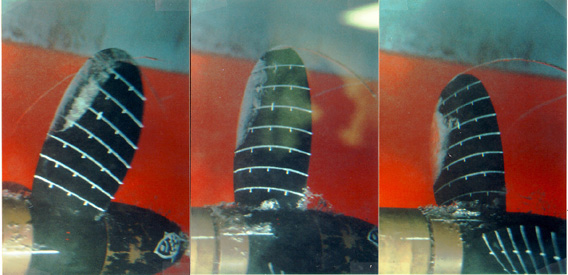
 )
)